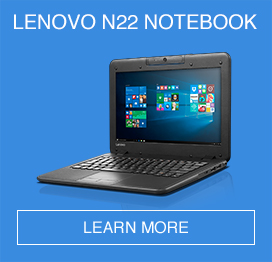A look at how mobile devices are increasingly playing a role in the classroom.
Mobile devices have become key channels for learning and school activities in the classroom. Today’s children grow up in a world of screens, and interactive digital displays are as normal to them as books and magazines are to their parents. Growing up with electronic devices for entertainment and information, it’s natural they would want to use them as learning tools in the classroom.
Improving learning through mobile devices
Improving learning outcomes is a key goal of any school, and research has proven that mobile devices help achieve this. Researchers at the National Taiwan Normal University, in their March 2016 study, quantitatively analysed the effects of mobile-integrated education and found mobiles significantly improved learning for students over traditional teaching methods.
Mobile technology also makes teachers’ lives easier, as they can access a huge range of educational content and offer the latest lessons and knowledge. Instead of waiting a year or more to replace textbooks, digital books can be instantly updated.
In addition to providing access to the latest learning materials, mobile devices may also offer health benefits. Heavy school bags are considered to be a serious health risk for children, with up to 70 per cent of Australian children suffering back pain. Swapping piles of textbooks for a single, lightweight tablet can be an important health choice.
The challenges of going mobile for schools
Despite all the benefits of mobile devices, cost is often an issue for public schools and many families. Affordability is critical when it comes to technology, especially as damage to devices may be more common among younger children. A robust, cost-effective tablet that’s designed for educational use might be more appropriate than an ultra-high-end or expensive one. Also, essays, internet research, basic maths and other learning activities don't typically require a huge amount of processing power.
An example of robustness in a mobile device is motion sensors that can shut down a dropped hard drive before it hits the ground. Other examples include roll cages, spill-resistant keyboards and one-button data recovery.
Schools also need to take into account the battery life of mobile devices, as students often move from class to class and are not always able to plug their devices into a power point.
Security remains a top priority for schools, and so mobile devices need to be robust enough to protect children and equipment while also being user-friendly for teaching staff who aren't tech-savvy. Software that’s specifically targeted to schools, such as simple-to-use, managed bring-your-own-device (BYOD) solutions, can help both teachers and parents stave off malware.
Whether provided by schools or BYOD, mobile devices will increasingly play a role in classrooms. IDC predicts the adoption of mobile devices in schools will continue to grow – the only decision is which device to purchase. Tablets can offer greater portability, while laptops provide more power and better keyboards. Alternatively, a hybrid/convertible device, such as the ThinkPad Yoga, could offer more flexibility as it provides the best of both worlds.
Lenovo® ThinkPad® and ThinkCentre® products, powered by Intel® processors, are optimised for long, worry-free hours of superior productivity which provide a better teaching and learning experience for all. Speak with a Lenovo education specialist today to learn more.

















